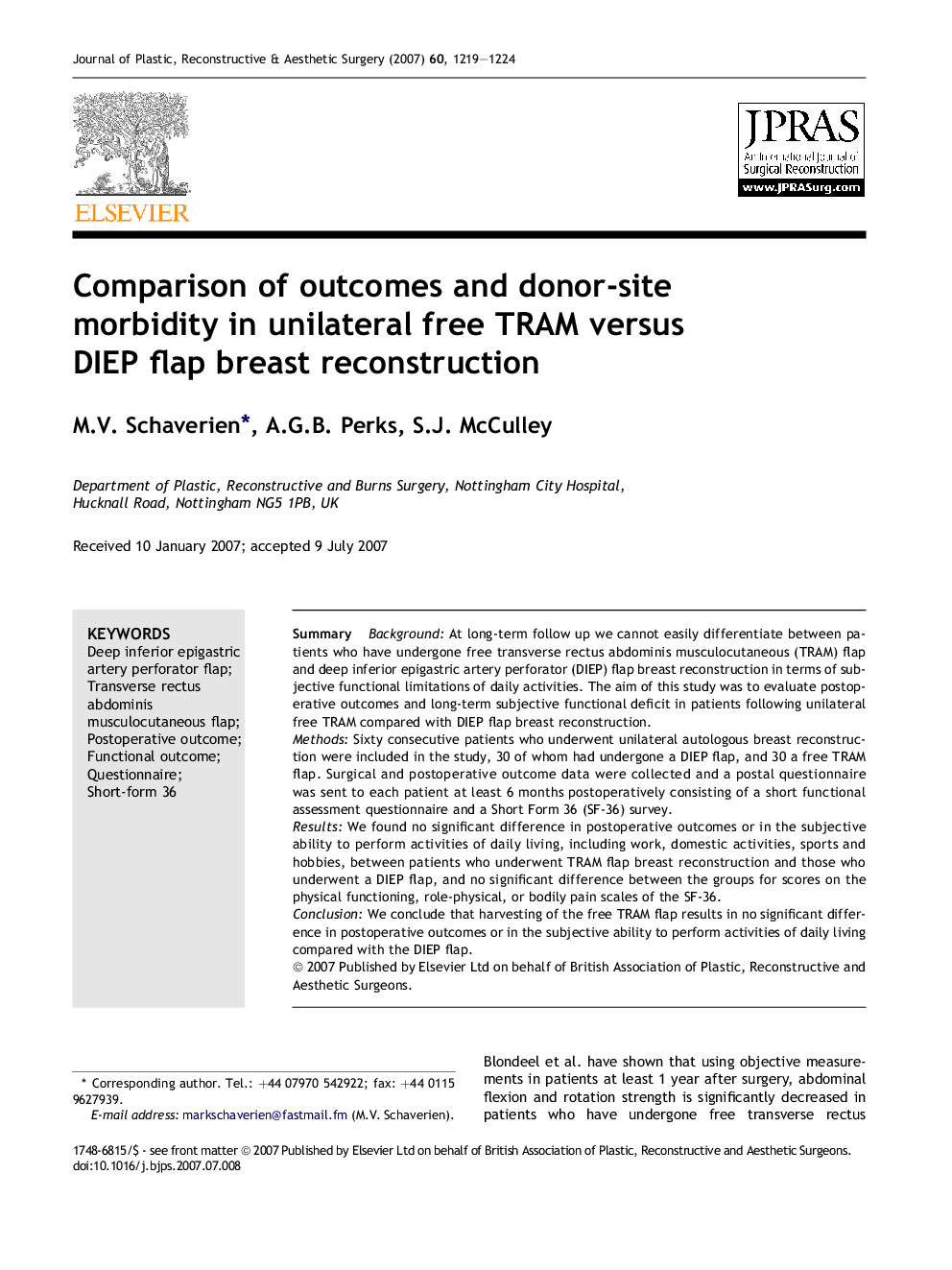| Article ID | Journal | Published Year | Pages | File Type |
|---|---|---|---|---|
| 4121654 | Journal of Plastic, Reconstructive & Aesthetic Surgery | 2007 | 6 Pages |
SummaryBackgroundAt long-term follow up we cannot easily differentiate between patients who have undergone free transverse rectus abdominis musculocutaneous (TRAM) flap and deep inferior epigastric artery perforator (DIEP) flap breast reconstruction in terms of subjective functional limitations of daily activities. The aim of this study was to evaluate postoperative outcomes and long-term subjective functional deficit in patients following unilateral free TRAM compared with DIEP flap breast reconstruction.MethodsSixty consecutive patients who underwent unilateral autologous breast reconstruction were included in the study, 30 of whom had undergone a DIEP flap, and 30 a free TRAM flap. Surgical and postoperative outcome data were collected and a postal questionnaire was sent to each patient at least 6 months postoperatively consisting of a short functional assessment questionnaire and a Short Form 36 (SF-36) survey.ResultsWe found no significant difference in postoperative outcomes or in the subjective ability to perform activities of daily living, including work, domestic activities, sports and hobbies, between patients who underwent TRAM flap breast reconstruction and those who underwent a DIEP flap, and no significant difference between the groups for scores on the physical functioning, role-physical, or bodily pain scales of the SF-36.ConclusionWe conclude that harvesting of the free TRAM flap results in no significant difference in postoperative outcomes or in the subjective ability to perform activities of daily living compared with the DIEP flap.
